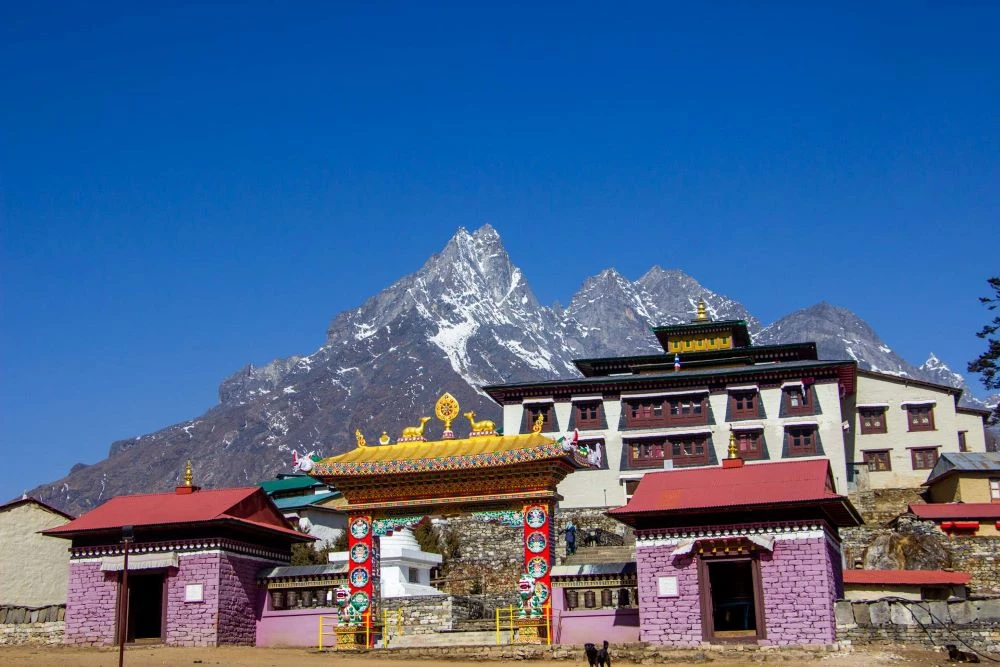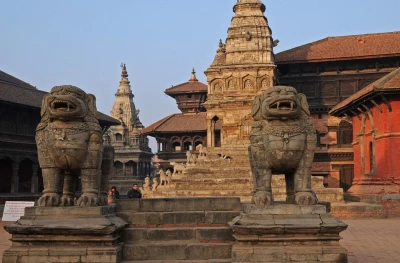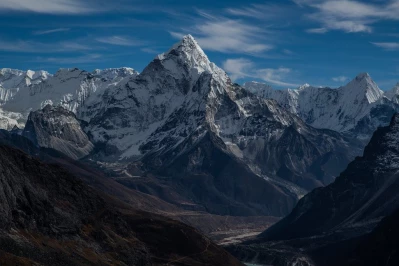
The Scenic Sanctuary of Tengboche Monastery in Everest Base Camp Trekking Tour
- 4. Photography Tips for Tengboche Monastery and the Himalayas
- 1. The History and Religious Significance of Tengboche Monastery
- 2. Experiencing the Spiritual Aura of Tengboche Monastery
- 3. Witnessing the Breathtaking Himalayan Panorama
- 4. Photography Tips for Tengboche Monastery and the Himalayas
- 5. The Allure of Tengboche Monastery Awaits
- 6. A Journey Beyond the Peak
As you embark on the exhilarating journey of Everest Base Camp trekking tour, a hidden gem awaits amidst the majestic embrace of the Himalayas - the Tengboche Monastery. This ancient monastery is more than just a religious landmark; it's a captivating blend of cultural immersion, breathtaking scenery, and a profound sense of tranquility.
This article delves into the rich history, spiritual significance, and captivating beauty of Tengboche Monastery, turning your Everest Base Camp trek into an unforgettable experience that transcends the physical challenge.
4. Photography Tips for Tengboche Monastery and the Himalayas
1. The History and Religious Significance of Tengboche Monastery

Standing tall at 3,867 meters (12,684 feet), Tengboche Monastery boasts a rich history dating back to the 19th century. Legends claim that Guru Rinpoche, a revered Buddhist master, blessed the site in the 8th century. The current structure, however, was tragically destroyed by an avalanche in 1934. Rebuilt in 1936, Tengboche Monastery remains a vital center for Sherpa culture and Tibetan Buddhism, specifically the Nyingma lineage.

The three-story structure itself is a masterpiece of Himalayan architecture. Adorned with intricate wood carvings, colorful prayer flags fluttering in the wind, and prayer wheels constantly turning, the monastery exudes a unique charm. Inside, colossal statues of Buddha Sakyamuni and Guru Rinpoche preside over the serene atmosphere, filled with the soft chants of monks engaged in their daily rituals.
2. Experiencing the Spiritual Aura of Tengboche Monastery
Stepping into the hallowed grounds of Tengboche Monastery is an experience that transcends the physical. The air hums with a sense of peace and tranquility. The rhythmic chanting of monks reverberates through the halls, transporting you to a realm of spiritual serenity. Visitors are welcome to observe prayer ceremonies, usually held in the mornings and evenings. Remember to dress modestly and maintain a respectful silence while witnessing these sacred rituals.
Remember, Tengboche Monastery is an active place of worship. Be mindful of your behavior and maintain a respectful demeanor. Avoid loud noises or disruptive activities. Photography is permitted within the complex, but be sure to ask permission before photographing any monks.
3. Witnessing the Breathtaking Himalayan Panorama
Tengboche Monastery's true magic lies in its breathtaking location. Nestled amidst the Khumbu region of the Everest Base Camp trek, the monastery offers unparalleled views of the Himalayan giants. Towering peaks like Ama Dablam, Lhotse, and of course, the mighty Everest itself, pierce the azure sky, creating a panorama that leaves you speechless.
The altitude of Tengboche Monastery further enhances the experience. Standing at nearly 4,000 meters, the air is crisp and clear, allowing for unobstructed views of the surrounding mountains. Early mornings, when the skies are clear, often present the most spectacular sight, with the snow-capped peaks glistening under the golden rays of the rising sun. As you continue your trek in Nepal's Everest Base Camp, keep an eye out for the diverse flora and fauna that inhabit this unique ecosystem.

4. Photography Tips for Tengboche Monastery and the Himalayas
For photography enthusiasts, Tengboche Monastery and the surrounding Himalayas present a treasure trove of opportunities. To capture the architectural beauty of the monastery, consider using a wide-angle lens to encompass its grandeur.

Experiment with different apertures to control the depth of field, allowing you to isolate specific details or capture the entire scene in focus. Pay attention to lighting conditions, using natural light to your advantage. Early mornings and evenings often offer the most diffused light, ideal for capturing details and vibrant colors.
When photographing the Himalayas, a telephoto lens becomes your best friend. This allows you to zoom in on specific peaks and capture their immense scale and grandeur. Consider using a tripod for stability, especially at higher altitudes where wind can cause camera shake.
Experiment with polarizing filters to enhance the color saturation of the blue sky and reduce glare on the snow-capped peaks. Don't forget to capture the details along the trek too, such as close-up shots of colorful prayer flags or portraits of the Sherpa people you encounter.
>>> Discover more: The Epic 14-Day Journey to Conquer Nepal Everest Base Camp
5. The Allure of Tengboche Monastery Awaits
The Tengboche Monastery is more than just a stop on your Everest Base Camp trekking tour; it's a cultural and spiritual experience that enriches your adventure. From its historical significance and serene atmosphere to the breathtaking Himalayan backdrop, Tengboche Monastery offers a unique glimpse into the heart of Sherpa culture and Tibetan Buddhism. So, lace up your trekking boots, grab your camera, and prepare to be captivated by the magic of Tengboche Monastery.
While Tengboche Monastery welcomes visitors, it's important to be respectful of the sacred space and the local culture. Here are some practical tips for your visit:
Entrance Fee: A small entrance fee is charged to help with the upkeep of the monastery.
Dress Code: Dress modestly, with shoulders and knees covered. Avoid wearing brightly colored clothing or revealing attire.
Respectful Behavior: Maintain a quiet and respectful demeanor while exploring the monastery grounds. Avoid loud noises or disruptive activities.
Photography: Photography is permitted within the complex, but always ask permission before photographing any monks.
Best Time to Visit: The Nepal Everest Base Camp trek is typically undertaken during the spring (March-May) and autumn (September-November) seasons. These periods offer the most favorable weather conditions, with clear skies and comfortable temperatures. However, keep in mind that these are also the peak tourist seasons.
Trekking Difficulty: The trek to Tengboche Monastery is considered moderate, with gradual inclines and well-maintained trails. However, the altitude can be challenging for some. Proper acclimatization is crucial before reaching Tengboche.
>>> Keep reading: Nepal must know before travel
6. A Journey Beyond the Peak
In conclusion, Tengboche Monastery awaits, ready to unveil its magic and enrich your adventure with a profound sense of wonder. If you're an experienced adventurer seeking a uniquely styled expedition beyond the typical tourist trail, contact Adventure Asia today. We craft unforgettable experiences that blend cultural immersion, breathtaking scenery, and a touch of luxury, ensuring your Everest Base Camp trekking tour becomes a journey of a lifetime.
- 4. Photography Tips for Tengboche Monastery and the Himalayas
- 1. The History and Religious Significance of Tengboche Monastery
- 2. Experiencing the Spiritual Aura of Tengboche Monastery
- 3. Witnessing the Breathtaking Himalayan Panorama
- 4. Photography Tips for Tengboche Monastery and the Himalayas
- 5. The Allure of Tengboche Monastery Awaits
- 6. A Journey Beyond the Peak





















